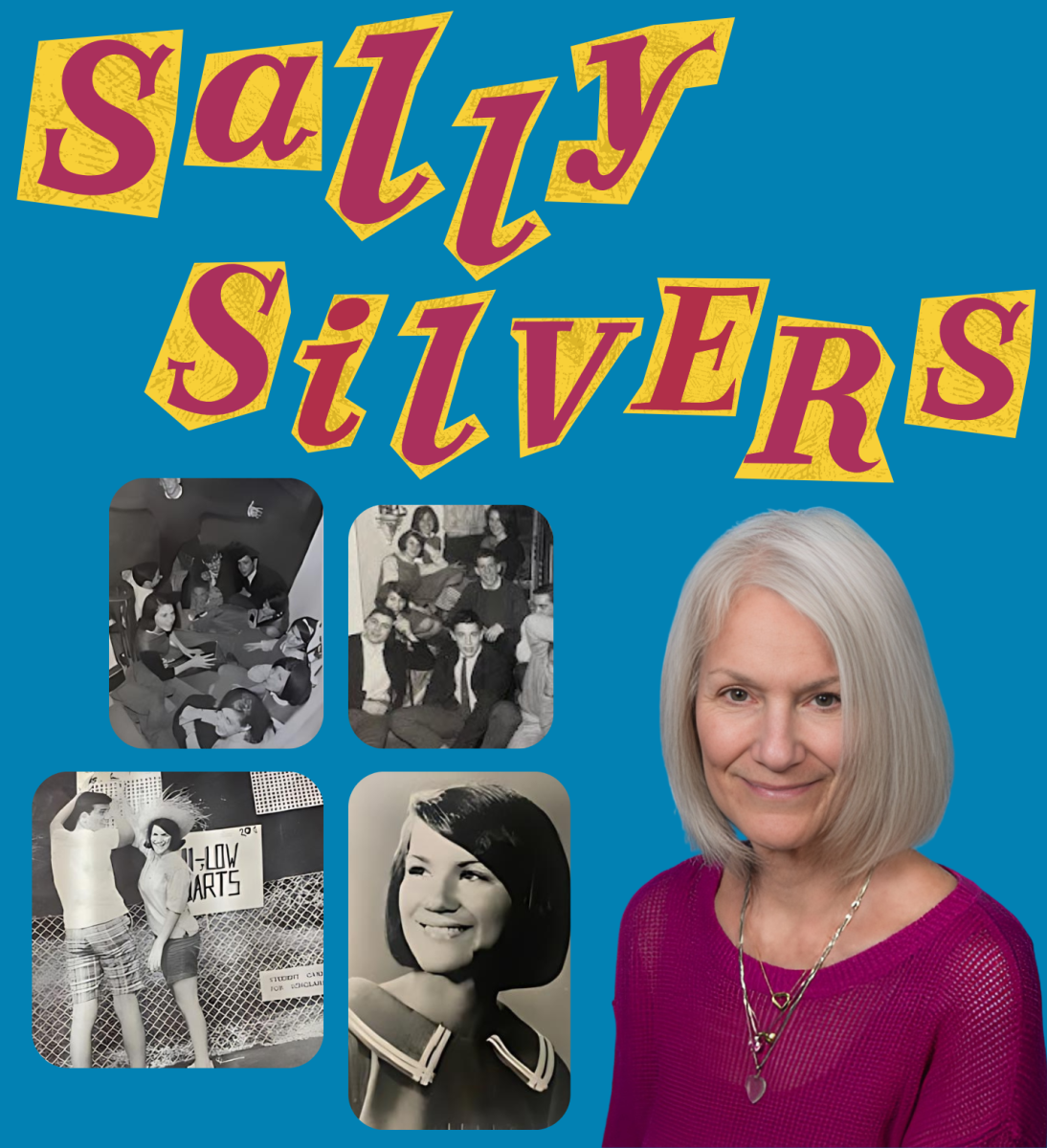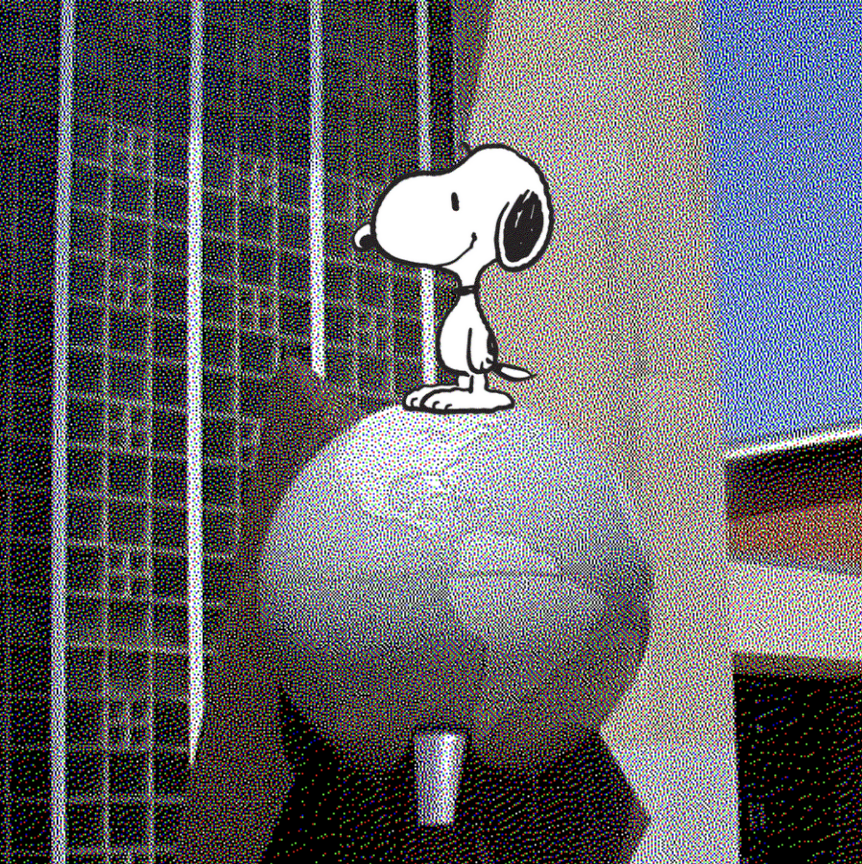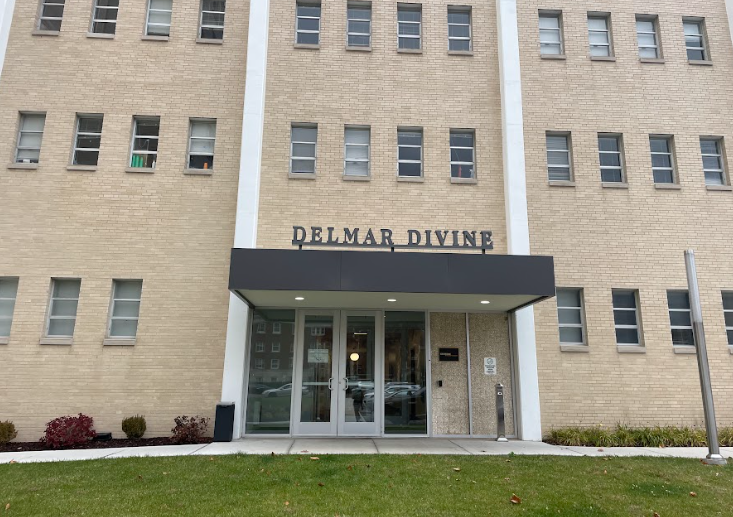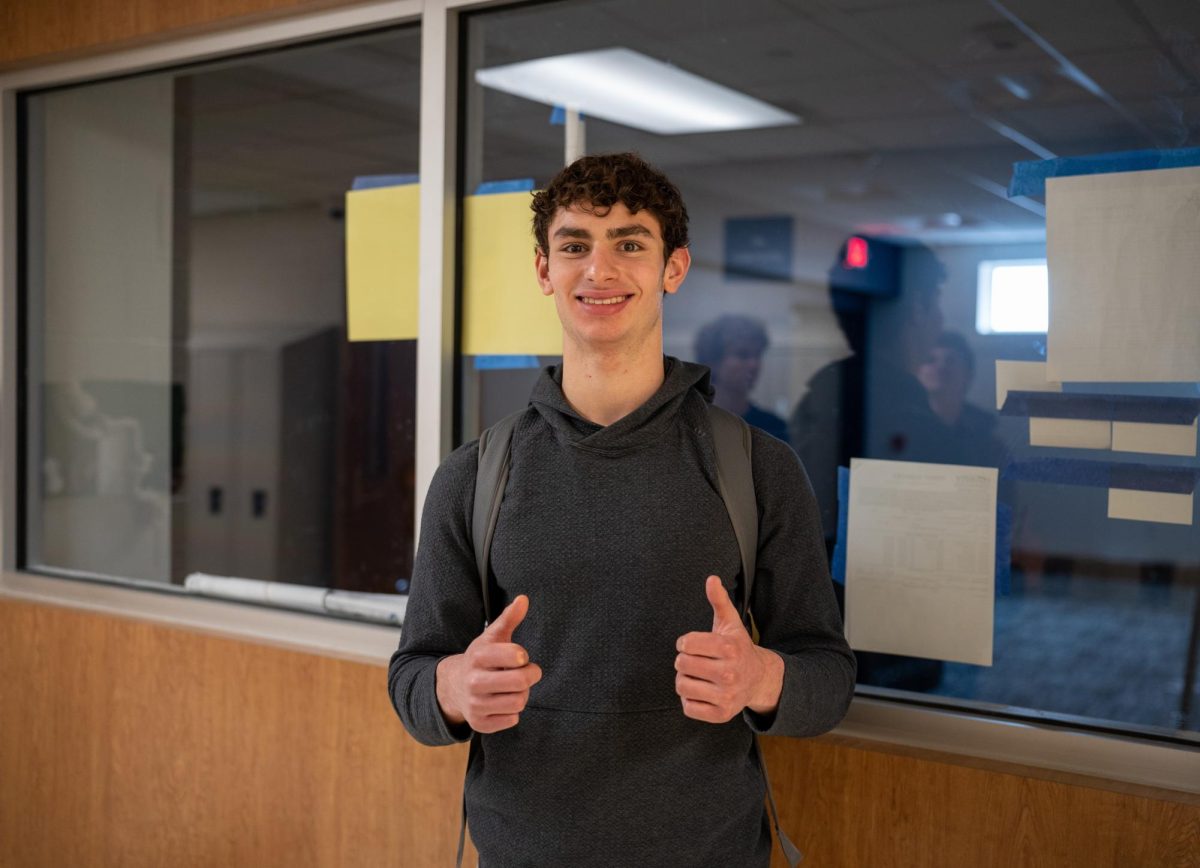
No matter the religion, no matter the belief, light is a universal symbol for good: people all over the world celebrate using light each winter season in joyous festivities.
Christianity
As the holidays draw near and the winter season begins to creep upon us, light becomes a more and more valuable commodity to our everyday lives. Whether it is the white Christmas lights twinkling in the trees in downtown Clayton or a fire roaring in the fireplace at home, it’s undeniable that as the weather gets chillier more light is used for warmth and security. In the winter, different religions use and take on the idea of light through celebration.
Christianity is one of these religions. Light is a theme in the Christmas story, which describes how the three wise men followed the Star of Bethlehem to find baby Jesus, who was just born. The star served as a guide to find Jesus, which symbolizes that Jesus is a guiding light. The Advent wreath is used in the preparation for Christmas as well.
“We [Christians] begin with one light and as the light of the world [the birth of Jesus] draws closer we light four lights,†Monsignor John Shamleffer of St. Joseph’s Catholic Church in Clayton said. “It is dimmer at the beginning of Advent and brighter at the end towards Christmas, and it’s done in a wreath setting to remind us that there is no beginning or end to a circle and that Christ, like a circle, is eternal.â€

Light is used not only in decorations, but also as a larger idea in the Christian community.
“Light is considered a universal symbol for truth, for knowledge, and since God is automatically considered to be omniscient, he leads to light,†president of the CHS Fellowship of Christian Athletes John Holland said.
Light is a form of wisdom that connects it with the idea of God and holiness.
“Biologically, humans are not made to see in the dark,†Holland said. “Humans need a lot of light to be able to see anything… We have formed a link between light and knowledge. With darkness, however, one has in front of them the unknown… Darkness actually is the embodiment of ignorance.â€
The idea of light is used prevalently in Christianity, and according to Shamleffer, Christians are like candles.
“We also see the importance of allowing the light to be in each person, that’s why at baptism the child is presented with a baptismal candle lit from the Easter candle, as a reminder that the light of Christ is in their life,†Shamleffer said. “Each of us can think of our light as being insignificant, and makes us think ‘what can we do?’â€
Light is also used in other ceremonies. The Roman Catholic church celebrates the Easter Vigil. The priest lights the Easter Fire. As it grows dark, the priest lights the Easter Candle from the flame. Churchgoers carry candles, and when they enter the unlit church, the lights eventually illuminate the church. According to Holland, Christians are like candles, illuminating the world.
“Part of this whole celebration is a celebration of the light,†Shamleffer said. “The light represents the one who dispels darkness, Jesus Christ, and the darkness is the absence of God from our world.â€
Light is a powerful substance that is used not only in ordinary life to illuminate the world around us, but it also gives us wisdom by letting us see clearly. Light, in many religions, is like God, in that it is an unexplainable, yet undeniable, truth.
Judaism
Light is used in Judaism and its celebrations. One example is Hanukkah, a popular Jewish holiday, filled with tradition, family, and of course, light. During the cold winter months, it is easy to find a Jewish family huddled around a twinkling menorah and celebrating the holiday together. Light brings the family together, and represents a history and a belief.
“Hannukah, a winter holiday remembering the rededication of the Temple in 165 B.C.E., is known as the ‘Festival of Lights,’†Saint Louis University Professor David Oughton said. “A candle is lit for each of the eight days as a sign of a miracle.â€
The candles are held in a menorah, which lights the room. Families play dreidel, exchange gifts, and eat latkes. The attitude of the celebration is bright and warm, just like the candles it centers around. The light illuminates the celebration, spreading warmth and joy.
“The light is representative of the miracles as well as God’s light and faith and hope and all that good stuff,†senior Becca Steinberg said. “I think that light became a universal symbol of hope, knowledge, enlightenment, and other positive things because without light, you are helpless to really do anything at all.â€

God, like light, helps Jews to see. He allows them to see what is right and what is good. Light is used to represent many things in Judaism, and according to Rabbi Hyim Shafner, even God himself. In many religious texts, God is referred to as light. Light is so significant that the first thing that God did to create the world was creating light.
“Perhaps our mission as humans is to bring light in a dark world,†Shafner said.
People are supposed to spread light, or as Steinberg said, hope, knowledge, and enlightenment. Hanukkah is a celebration that most people have heard of. However, according to Steinberg it is not the most important Jewish holiday.
“Hanukkah isn’t actually the major holiday for Jews,†Steinberg said. “It just happens to be a fun one and when Christmas was secularized, it got linked to Christmas, which is why it is so big. The holidays that are traditionally the most important are Rosh Hashana and Yom Kippur, which are actually in the fall.â€
Before Christmas was made popular, Hanukkah did not even involve exchanging gifts. Even if Hanukkah is not the biggest or most significant Jewish holiday, it is still a very old tradition.
“It commemorates an event from several thousand years ago,†Shafner said.
Hanukkah celebrates a victory over the Greeks, and the miracle that followed.
“When they got to the temple to praise God, the temple had been totally decimated,†Steinberg said. “They wanted to light the menorah, but they only found one bottle of oil, enough to last for one day. The oil making process lasted eight days, so the second miracle was that the tiny bottle lasted for eight days.â€
Just as it was back then, light is used to praise God in temples today.
“There is an eternal light in each synagogue that is always kept burning,†Shafner said.
Light is used in Judaism to represent God and his ideas. It is also used in celebrations such as Hanukkah, and spreads warmth and happiness.
Hinduism
Less advertised, though just as popular, is Diwali, the Hindu festival of lights. Diwali is celebrated all over the world in numerous ways. People light candles, lamps, and even firecrackers and fireworks. It is a lively celebration that many people enjoy every fall.
“During Diwali people usually light rows of candles or clay lamps that are filled with oil,†sophomore Ravali Poreddy said. “This signifies the triumph of good over evil.â€
Besides just lighting lamps, people celebrate Diwali by getting together with family and friends.
“We do fireworks with other families, plus we have dinner parties at people’s houses,†sophomore Varun Chakravarthy said.
Chakravarthy enjoys Diwali because he gets to see friends that don’t go to school with him.
Like most religious celebrations, Diwali is a time to celebrate people’s relationships as well as shared beliefs. Light is used to symbolize religious beliefs in numerous celebrations.

“Light is supposed to signify good, vision, and knowledge,†Poreddy said. “Darkness is supposed to represent ignorance and impurity because it blocks out light, which is supposed to be the source of light and knowledge.â€
Chakravarthy has a different view of what light represents in religions.
“In Hinduism, I guess light represents life,†Chakravarthy said. “Most other religions also think of it that way.â€
Others, though, believe that light is represented as a triumph over evil.
“Light is used in the ceremonies of different religions as a symbol of overcoming the darkness of sin or ignorance,†Saint Louis University Professor David Oughton said.
According to him, light allows a person to see spiritually as well as physically. Light guides people on the path of life.
Light is used as a symbol in Diwali, but the holiday also has a history to it. Light is used in Diwali because rows of lights welcomed Lord Rama back to his home after being banished for 14 years.
“It’s supposed to represent the coming home of one of our gods named Lord Rama. It was supposed to light up the passageway of Lord Rama to his village,†Chakravarthy said.
The light guided him home, as it guides people along their way today. This ancient event is still hugely important and significant. It is used to teach lessons, and just to bring people together through celebration.
“During his time away, Rama defeated the demon Ravana, and crowned Ravana’s brother, Vibishina, who was good, to be the new king of Lanka,†Poreddy said.
Diwali is celebrated around November because that is the time that Rama returned. This year it fell on Nov. 5. Outside of celebration, light is used often in Hinduism.
“Light is used a lot in prayer,†Poreddy said. “Usually whenever you pray either at the temple, or at home, people put out candles in front of their pictures.â€
For people, religion can be described as a home—and, as described of Diwali, this light is both physical and spiritual. Whether light comes in the form of firecrackers or Advent wreaths, it is a beautiful way to enjoy the holidays, and all the people involved.
Islam
Light is a powerful idea that plays a role in many religions, including Islam. Not only can lights physically be seen around this time, but families find warmth being with each other. The Hajj, a Muslim celebration, celebrates sacrifice and service to the community as well as volunteering. Hajj is celebrated according to the Islamic calendar, and this year was Nov. 14 to Nov. 18.
It is part of the five pillars of Islam. These pillars include ‘shadadah’, or the basic creed of Islam: “I testify that there is none worthy of worship except God and I testify that Muhammad is the Messenger of God.â€
The creed is a foundation for many other Muslim beliefs and practices. The other pillars include ‘salah’ or ritual prayer, ‘sawm’ or fasting during the month of Ramadan, ‘zakat’ or alms giving and finally ‘hajj’, the pilgrimage to Mecca.
During this holiday many people make a pilgrimage to Saudi Arabia, including roughly 35 to 40 people from the Greater St. Louis Area according to Imam Muhamed Hasic of the Islamic Community Center in St. Louis. In Islam, it is tradition that each adult Muslim who can afford it should travel to Mecca during Hajj. Muslims also spend time with family and extended family to celebrate.
“It’s harder to do it [get together with family] here, because most of my family lives back in Lebanon so we can’t really all get together,†sophomore Hassan Hossayrami said. “But in Lebanon we get all our relatives together from my mom and dad’s side. We usually have a barbeque, and all the kids do fireworks and stuff like that. It’s all about all the families being together.â€

Lights are strung on the Minaret around the time of the holiday, Nov. 14, and at the Islamic Community Center in St. Louis the Minaret is lit up from Nov. 14 until Nov. 18.
“We use the Minaret as a marker to call for prayer,†Imam Muhamed Hasic said. “During this time of Hajj we put lights on the tower for a few nights.â€
Hajj is not the only time that Muslims celebrate their religion.
“Another time which we celebrate is the marking of the end of the month of fasting, or Ramadan, which this year ended on Sept. 8,†Hasic said. “We put up lots of electric lights during that time also.â€
Hossayrami describes Ramadan.
“It’s celebrated as the break from the fast of the Ramadan. The end of Ramadan is celebrated with family and you get a couple days off school but you don’t really do anything special besides eating again,†Hossayrami said.
The holiday that immediately follows Hajj is Eid al-Adha, which is celebrated in commemoration of the story of Abraham and his son. God told Abraham to sacrifice his son, but when he agreed, God provided him with a ram instead. The holiday is celebrated on the third day of Hajj and lasts for four days. To honor this story, they sacrifice animals, and donate the meat to the comunity. Every year the Islamic Community Center of St. Louis donates around 3 thousand pounds of meat to needy people from this holiday.
The holiday season is certainly a time of light, gathering and, most importantly, family. This theme of celebration applies to many different religions and cultures and is a strong bond between all the different religions.
By Meredith McMahon and Sarah Blackwell






